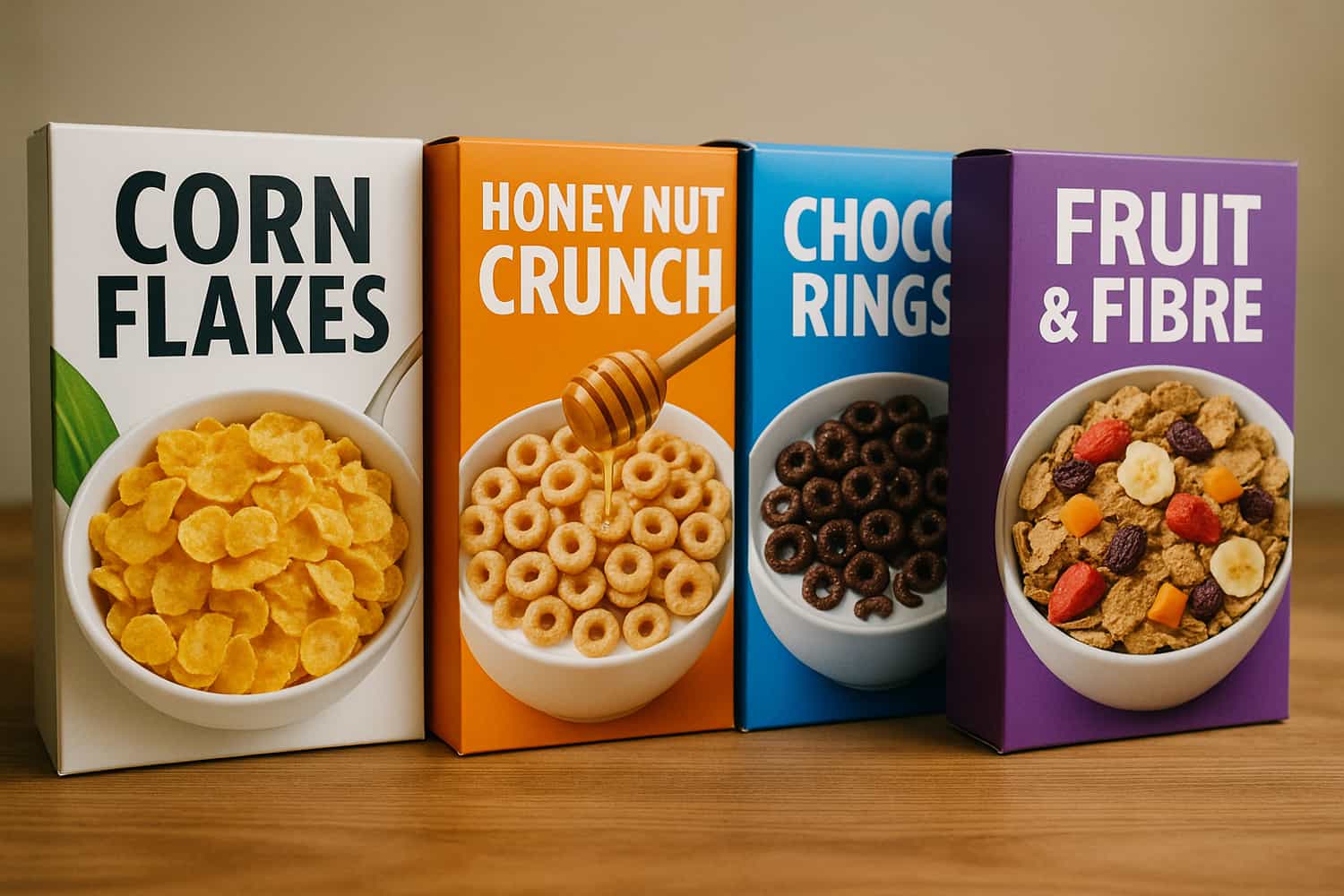A new investigation reveals higher glyphosate levels in children’s cereals in Europe than in the U.S., raising concerns over food safety, especially for kids.

Table of contents
When it comes to kids’ breakfast cereals, the usual criticism is pretty straightforward: too much sugar. But a new investigation by Moms Across America (MAA), a well-known group of activist mothers in the U.S., shifts the spotlight to something potentially even more disturbing — the presence of pesticides, particularly glyphosate, the world’s most widely used herbicide.
And what they found should concern not only American parents, but also European families who often assume stricter regulations mean safer products.
European cereals more contaminated than American ones?
MAA commissioned an independent lab to test seven popular children’s cereals sold in the U.S., U.K., France, and Germany. Italy wasn’t included in the analysis. The lab searched for traces of glyphosate and other pesticide residues using standard testing protocols.
Given Europe’s historically tougher stance on food additives and chemicals, researchers expected lower contamination levels in European cereals. The reality, however, was shocking: many European products showed higher levels of glyphosate than their U.S. counterparts.
“We were shocked to find higher levels of glyphosate, especially in cereals from the UK and France, and the highest levels in Germany. We expected the opposite,” said Zen Honeycutt, director of Moms Across America. “Now we are calling for international dialogue to end the use of glyphosate.”
So, how much glyphosate are we talking about?
Country-by-country findings
Let’s break it down with a few standout examples — though the full list reveals a disturbing trend.
In the United Kingdom, Quaker Oatmeal Sweet Cinnamon tested at 513 parts per billion (ppb) of glyphosate. That’s over 5,100 times higher than the 0.1 ppb level that animal studies have linked to organ damage and hormonal disruption.
In France, the notorious Nestlé Cookie Crisp cereal topped the list at 732 ppb. That’s seven times above the maximum residue limit allowed under French law for solid foods, and 7,300 times higher than levels associated with toxic effects in the scientific literature.
In Germany, two cereals tested positive as well: Dr. Oetker Vitalis Classic Porridge showed 17 ppb, while Kellogg’s Choco Krispies came in at 50 ppb.
By contrast, the United States showed lower values across the board, though still concerning. 90% of the products tested were contaminated, but with less dramatic levels. Honey Nut Cheerios by General Mills had 11 ppb, and Kellogg’s Cocoa Krispies had 7.3 ppb.
One especially worrying detail: even some U.S. organic cereals contained elevated glyphosate levels, raising the specter of fraudulent labeling or contamination during processing.
The European paradox
Perhaps the most surprising — and frustrating — outcome of this report is the failure of Europe’s stricter food regulations to protect children from this toxic herbicide. While the EU has banned many synthetic additives and dyes, glyphosate has slipped through the cracks. Experts point to agricultural practices like using glyphosate as a desiccant — sprayed on crops just before harvest to dry them out — as a key reason why residues remain high in finished cereals.
And glyphosate isn’t the only concern.
The same tests also revealed traces of chlormequat, a plant growth regulator banned in the U.S. due to its reproductive toxicity, in 11 out of 14 cereal products sold in the U.S. In other words, chemical exposure in kids’ cereals isn’t limited to a single herbicide.
How the cereals were tested
Cereal samples from the UK, France, and Germany were sent to a U.S.-based accredited lab (ISO/IEC 17025:2017, CLIA High Complexity). The lab primarily used the ELISA method (Enzyme-Linked Immunosorbent Assay), a common screening tool for detecting pesticides above certain thresholds.
In some cases, the lab also uses the more accurate LC/MS/MS method (liquid chromatography coupled with tandem mass spectrometry), but it’s unclear whether this was applied to all samples in the MAA study.
It’s worth noting that the published data did not disclose how many samples per brand were tested, nor whether the results were replicated or cross-verified. This doesn’t invalidate the findings, but it does suggest caution when generalizing about specific brands or market-wide contamination levels.
Children face higher risks
Experts commenting on the study point out that children are especially vulnerable to pesticide exposure. They consume more cereal relative to their body weight than adults do, often eating multiple servings per day. When combined with other foods likely to carry chemical residues, their cumulative exposure can quickly surpass “safe” limits.
According to several studies cited by MAA, glyphosate has been linked to:
- non-alcoholic fatty liver disease
- endocrine disruption
- birth defects, miscarriages, and premature births
- neurological damage
- increased risk of several cancers
Even at very low doses, glyphosate is not without consequences.
So what can we do?
This is no longer just an American issue. Glyphosate is now a global emergency. Since its introduction by Monsanto in 1974, it has become a cornerstone of industrial agriculture. Researchers increasingly view it as a major contributor to rising cancer rates. In fact, nearly 1 in 2 Europeans is now projected to receive a cancer diagnosis during their lifetime — a rate comparable to that in the U.S.
Moms Across America is calling for a worldwide ban on glyphosate and an urgent transition to organic and regenerative farming practices, which they claim can reduce children’s exposure by up to 80% in a single season.
In the meantime, families can make safer choices. Experts recommend sticking to organic, local, and minimally processed foods. A healthier breakfast, for instance, could include organic eggs, sourdough bread, fresh fruit, and kefir — a far cry from cartoon-covered cereal boxes.
Source: Moms Across America
